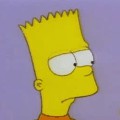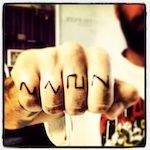| Author
|
Bouncing wav 16 bit or 32 ?
|
Cosmic Tandav
Trailoka

Started Topics :
67
Posts :
1026
Posted : Jan 25, 2010 13:08:16
|
hi guys i wanted to check with you when you bounce a smaple in wav to use before the final mixdown should you be bouncing in 32 bit (at what float ?)or is 16 bit good enough ?
Is there a big quality difference between the two that you can notice as me personally can not tell a huge difference..
        https://soundcloud.com/hypnotiquerecordings https://soundcloud.com/hypnotiquerecordings |

|
|
Trip-
IsraTrance Team

Started Topics :
101
Posts :
3239
Posted : Jan 25, 2010 14:23
|
what about 24?
I'd vote for that one.
        Crackling universes dive into their own neverending crackle... Crackling universes dive into their own neverending crackle...
AgalactiA |

|
|
Colin OOOD
Moderator

Started Topics :
95
Posts :
5380
Posted : Jan 25, 2010 15:35
|
|
TimeTraveller
IsraTrance Full Member

Started Topics :
80
Posts :
3207
Posted : Jan 25, 2010 15:49
|
but isn't it like some or even many synthesizers work in 16 bit?.For instance phosycon.. I ask myself this question too cause do not want to waste space.
        https://soundcloud.com/shivagarden https://soundcloud.com/shivagarden |

|
|
Colin OOOD
Moderator

Started Topics :
95
Posts :
5380
Posted : Jan 25, 2010 16:17
|
|
TimeTraveller
IsraTrance Full Member

Started Topics :
80
Posts :
3207
Posted : Jan 25, 2010 16:27
|
No I haven't really,I thaught so only. I tink I've read somewhere about my electribe sx that its output is only 16 bit and this information has lead me to think software would be mostly not higer,espescially the good old ones.
I used to save all posible to 24 bit,even mp3 samples - that was false as I've recently learned from some thread here.
My change was than a bit hard maybe,started to save than mp3 to its mp3 rate and synth at all to 16 bit audio.
Thank you for your reply I will bounce software synth's to 24 bit again.
        https://soundcloud.com/shivagarden https://soundcloud.com/shivagarden |

|
|
PoM
IsraTrance Full Member

Started Topics :
162
Posts :
8087
Posted : Jan 25, 2010 18:03
|
|
even if you use 16 bit samples it s converted to 32 bit float as many daws use this for sound engine but i would bounce/record audio at 24 or 32 bit float not 16,just check all the avantage of using 24 bit insteed of 16 on the net , and for the final miwdown you have 2 choices: bounce final mix at 32 bit float or dither it to 24 using a flat dither (no noise) or just light noise do the trick too (futur processing at mastering will rise the noise that why it should not be loud if i m right) |

|
|
APriest

Started Topics :
2
Posts :
98
Posted : Jan 25, 2010 18:05
|
16 and 24 bit are integers, 32 bit is float, the main difference between 24 and 32 bit is that 32 bit is like "magical 24 bit".
That's the reason:
The internal architecture
Integer notation
Digital waveforms are represented by a series of numbers. The sample rate defines the
amount of samples per second, and each sample holds a number that represents the
amplitude of the waveform at a specific fraction of time. The possible values used to
represent the amplitude are determined by the amount of bits each sample consists of,
along with the notation used to represent the numbers. If each sample is noted as a 16-bit
integer, the possible values are 0 to 65 535 (negative integer notation is ignored throughout
this section for simplicity). The highest amplitude a 16-bit sample can accommodate is
represented by the number 65 535, which on a peak meter would light the full scale.
Such a full-scale amplitude equals 0 dBFS, which is the highest possible level any digital
system can accommodate. Mixing digital signals is done by simple summation of sample
values. Summing two samples with the value of 60 000 should result in 120 000. But
since 16 bits cannot hold such a large number, a digital system will trim the result down
to 65 535. Such trimming results in clipping distortion – normally, an unwanted addition.
The same thing happens when we try to boost a signal beyond the highest possible
value. Boosting by approximately 6 dB is done by doubling the sample value. Boosting a value of 40 000 by 6 dB should result in 80 000, but a 16-bit system will trim it down to
65 535.
Floating-point notation
Audio files are most commonly either 16- or 24-bit integer, and a D/A converter expects
numbers in such form. However, audio sequencers handle digital audio with a different
notation called floating-point, which is a slightly more complex than the integer notation.
On its basis, some of the bits (the mantissa) represent a whole number, while other
bits (the exponent) dictate how this number is multiplied or divided. It might be easier
to understand how the floating-point notation works if we define a simplified system
where in a 4-digit number the three rightmost digits represent a whole number (the
mantissa), and the leftmost digit defines how many zeros should be added to the right
of the mantissa. For example, with the value of 3256, the whole number is 256 and 3
zeros are added to its right, resulting in 256 000. On the same basis, the value 0178
is equal to 178 (no added zeros). The most common floating- point notation, which has
24 bits of mantissa and 8 bits of exponent, is able to represent an enormous range
of numbers, whether extremely small or extremely large. A 16-bit floating-point system
supports much smaller and much larger values than a 16-bit integer system. As opposed
to its integer counterpart, on a 16-bit floating-point system 60000 + 60000 does result
in 120 000.
While the range of numbers supported by modern floating-point systems extends beyond
any practical calculations mankind requires, there are some precision limitations worth
discussing. In the 4-digit simplified system above, we could represent 256 000 and 178,
but there is no way to represent the sum of the two: 256 178. Floating-point can support
very small or large numbers, but no number can extend beyond the precision of the
mantissa. A deeper exploration into the floating-point notation reveals that each mantissa
always starts with binary 1, so this ‘implied 1’ is omitted and replaced with one more
meaningful binary digit. Thus, the precision of the mantissa is always one bit larger than
the amount of bits it consists of. For instance, a 24-bit mantissa has an effective precision
of 25 bits.
The precision of the mantissa defines the dynamic range of a digital system, where each
bit contributes around 6 dB (more closely 6.02 or precisely 20log2). Many people wrongly
conclude that the famous 32-bit floating-point notation has 193 dB of dynamic range,
where in practice the 25-bit mantissa only gives us around 151 dB. Two samples on such
system can represent a very high amplitude or an extremely low amplitude, which can
be around 1638 dB apart. However, when the two samples are mixed, the loud signals
‘win’ the calculation, and any signal 151 dB below it is removed. Just like in our 4-digit
simplified system the result of 256000+178 would be 256 000.
From "Mixing Audio: Concepts, Practices and Tools"
That's why you can clip channels but when you decrease the master channel there isn't distortion.
That's why you can export a 32 bit wav with volume clipping and then you can decrease the volume in audition, the result is without without distortion, it's again like lowering the master channel.
Example:
Raise the volume of your master channel by 96 dB.
Export to wav 32 bit float.
Decrease in audition by 96 dB.
|

|
|
TimeTraveller
IsraTrance Full Member

Started Topics :
80
Posts :
3207
Posted : Jan 25, 2010 18:18
|
When I export my track at "the end" I never go lower than 24 bit.Dither I add only later when premastering the material in Wavelab .
When I'm more satisfied with my music I probably will go for 32 float at the export level.
I was aiming with my post for single files bouncing like exporting a track with an automated vsti synth for an audio track to free a bit the cpu.
        https://soundcloud.com/shivagarden https://soundcloud.com/shivagarden |

|
|
Nectarios
Martian Arts

Started Topics :
187
Posts :
5292
Posted : Jan 25, 2010 18:23
|
|
PoM
IsraTrance Full Member

Started Topics :
162
Posts :
8087
Posted : Jan 25, 2010 18:23
|
|
what i m not sure if you bounce at 24 bit if the daw use dither or not and if dither is needed there...that why i bounce at 32 bit float so no trouble but for the final mixdown i think it need dither cause the output of the daw is 32 bit float and you bounce at 24 bit. in cubase there is no automatic or setting for dithering they just added a plug to put after the master fader |

|
|
TimeTraveller
IsraTrance Full Member

Started Topics :
80
Posts :
3207
Posted : Jan 25, 2010 18:44
|
I've read that dithering is the very last stage in the chain of a mastering process.And apart of it that it should be only one time processed.
I bounce my final mix with -5.5 db (not rms  ) on the master fader, without dithering cause I add it later in Wavelab when premastering the mixdown. ) on the master fader, without dithering cause I add it later in Wavelab when premastering the mixdown.
Now I'µ a bit confused again but only a little 
        https://soundcloud.com/shivagarden https://soundcloud.com/shivagarden |

|
|
Trip-
IsraTrance Team

Started Topics :
101
Posts :
3239
Posted : Jan 25, 2010 18:44
|
u don't have to diether from 32 to 24.
        Crackling universes dive into their own neverending crackle... Crackling universes dive into their own neverending crackle...
AgalactiA |

|
|
APriest

Started Topics :
2
Posts :
98
Posted : Jan 25, 2010 18:50
|
Quote:
|
On 2010-01-25 18:44, Trip- wrote:
u don't have to diether from 32 to 24.
|
|
Maybe because in 32 bits you have 24 bits of mantissa and 8 bits of exponent?
32 bit and 24 bit have the same precision? |

|
|
PoM
IsraTrance Full Member

Started Topics :
162
Posts :
8087
Posted : Jan 25, 2010 18:51
|
|
it s what i have been told before but it seems i was wrong , i dont remember and don t have the knowledge to tell you why but we should aply dither everytime we go to less bit |

|
|